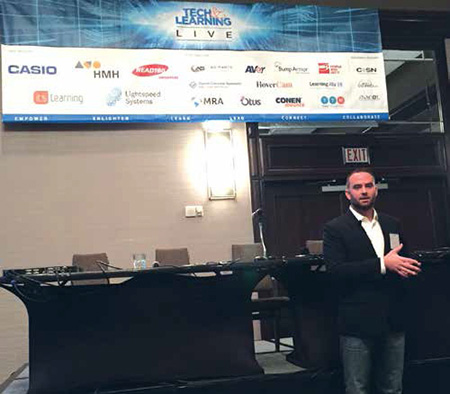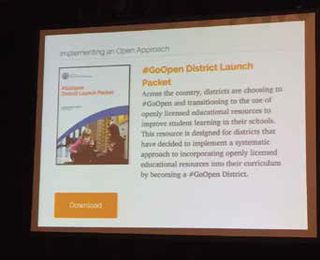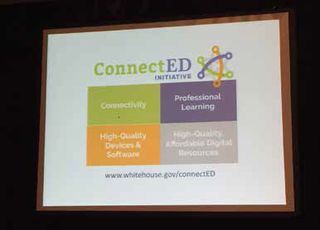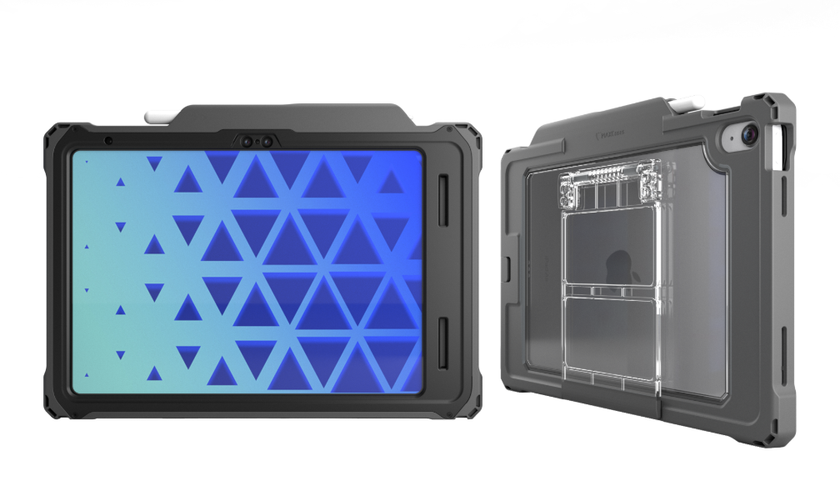STEP FORWARD AND #GOOPEN

On October 29, 2015, the U.S. Department of Education launched #GoOpen. The purpose was, and still is, to expand and accelerate the use of openly licensed educational resources in PreK–12 schools. The driving force behind #GoOpen centers on equitable access to high-quality, digital resources that can be adapted to different classroom contexts. Much of the work that led to #GoOpen started with a brief, but profound, statement by President Obama:
“In a country where we expect free wi-fi with our coffee, we should definitely demand it in our schools.”
This line delivered by President Obama became the mantra behind Future Ready, The National Education Technology Plan, and #GoOpen. It’s a humbling experience to reflect on #GoOpen and on how the movement that we at the Office of Educational Technology launched a year ago has grown from a pithy, comical hashtag to a commitment to equity and access for all students regardless of their zip codes.
This past October, I had the opportunity to keynote the Tech & Learning Live Princeton conference. I talked about #GoOpen and how it has evolved over the course of the past year and I attempted to anticipate where it will go in the coming year. I used three vignettes to tell my #GoOpen story: What is Open Education?; How I personally got involved in Open Education; and Why you should #GoOpen. I shared stories of successes and failures along the way towards my fellowship at the U.S. Department of Education. But the most important message I wanted to convey was a quote from a letter penned by Abigail Adams to John Adams on October 16, 1774, when John’s voice was not being heard during the first meeting of delegates in Philadelphia:
“You cannot be, I know, nor do I wish to see you an inactive Spectator.”
Both educators and students have been inactive spectators in the teaching and learning process for far too long. For decades, school districts and states have been handing educators scripts in the form of textbooks and proprietary software. #GoOpen puts creative content control back in the hands of education professionals across the country. Educators are our most valuable one-to-one learning device. They are far more dynamic and flexible than iPads and were collaborating in creative ways long before Chromebooks were released. Like that of John Adams, the voices of American educators must be heard. Educators must not serve as inactive spectators in the teaching and learning process.
Educators are some of the most innovative professionals in the country. According to the National Center for Education Statistics, teachers field and engage hours of questions and problems daily from students and facilitate the learning process for 21.2 elementary students per class and 26.8 secondary students per class. In addition to their classroom duties, educators spend countless hours outside of the classroom honing their skills and advancing their love of learning. Rather than creating more time and space for educators, a myopic, scripted curriculum gets in the way of the innovative teaching process.

However, we have an opportunity in PreK–12 education to change this script and nurture innovative practices within the classroom. It’s happening at several schools across the country already with the adoption of openly licensed educational resources (OER). The Hewlett Foundation defines openly licensed educational resources as “teaching, learning, and research resources that reside in the public domain or have been released under an intellectual property license that permits their free use and re-purposing by others. Open educational resources include full courses, course materials, modules, textbooks, streaming videos, tests, software, and any other tools, materials, or techniques used to support access to knowledge.” Fundamentally, OER allow school districts to reinvest in the teaching profession and bring creative, local content control back to educators.
I invite those who think OER and movements like #GoOpen are trends or phases in education that will pass to recall how Blockbuster video laughed off Netflix streaming. The education publishing industry is about to meet its disruptor. Since #GoOpen launched on October 29, 2015, 77 school districts and 18 states have committed to #GoOpen. These are numbers I never could have imagined a year ago. And these numbers will only continue to grow.

The greatest success of #GoOpen to date has been how educators and district leaders are talking about OER. #GoOpen is not just a conversation about transitioning away from textbooks; it’s a transformative approach to classroom practice that incorporates inquiry, project-based learning, and personalized and blended learning paradigms. Schools like Lawrence Public Schools in Lawrence, Kansas, are using a Teachers On Special Assignment, or TOSA, model to pay classroom teachers extra for their time and efforts in curating, organizing, vetting, and implementing OER. #GoOpen is not just about a medium shift; it’s a complete redesign of pedagogy.
After my keynote, I was asked what classrooms will look like in two, five, and ten years. My answer is pretty consistent. I hope that when we look inside every single classroom in this country we will see students with access to every instrument for learning that they need. I hope that every student will have an equal opportunity to create, author, and design his or her own learning. I hope that every teacher in this country will have the opportunity to grow professionally and learn from his or her peers across the globe. I hope that school districts and states will turn their backs on publishers of static instructional material and reinvest in the intellectual expertise of educators. Devices and technology will create new efficiencies and economical gains in the coming years, but they will only be effective if every student can access them. Only then will teachers and students no longer be spectators but active participants in their own teaching and learning.
Innovation does not have to be associated only with the latest application from Silicon Valley or the savvy keynote speaker. Rather, innovation can exist and flourish in our classrooms across the country. By nature, educators are researchers and designers within their classrooms, and they have always thrived on the ability to share and repurpose. As educational leaders, we must find ways to reinvest in the profession of teaching and celebrate the innovative work that educators design on a yearly basis. Fostering a shared culture of learning and instructional design within an academic institution can support teacher leadership and have a great impact on student growth. Openly licensed educational resources can help spark this culture and promote innovative teaching and learning as the materials that educators create daily are shared. It’s time that we recognize the innovative capacity of all educators.
#GoOpen is only one small step on this journey towards educational equity. I encourage you to step forward, find out more, and #GoOpen for every student and educator in this country.
Andrew Marcinek is the former Open Education Advisor at the Office of Education Technology. He currently works as the Chief Information Officer at Worcester Academy (MA).
Tech & Learning Newsletter
Tools and ideas to transform education. Sign up below.











